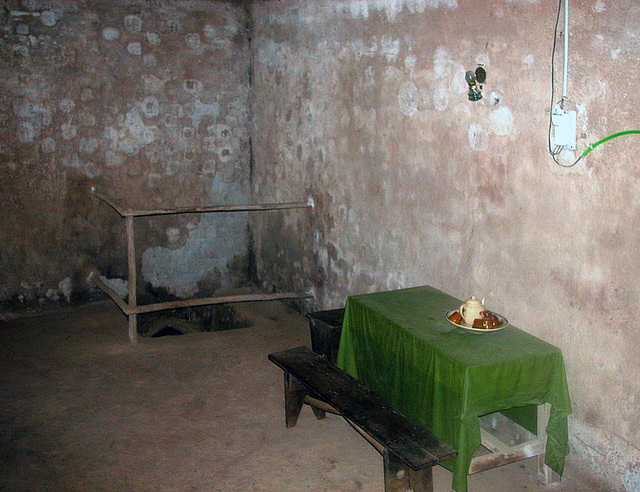A cross section from the tunnel system
Caodaiist women pray
Caodaiists pray in the side strake
Map of the tunnel network
Cao Đài Holy See hall
Barge on the Hậu Giang River
Cái Răng floating market on the Hậu Giang river
Cái Răng floating market on the Hậu Giang river
The market on the Hậu Giang river
Phung Hiep floating market
Phung Hiep floating market
Phung Hiep floating market
Phung Hiep floating market
Phung Hiep floating market
Phung Hiep floating market
Scene at the floating market Cái Răng on the Hậu G…
Scene at the floating market Cái Răng on the Hậu G…
Scene at the floating market Cái Răng on the Hậu G…
Scene at the floating market Cái Răng on the Hậu G…
Phung Hiep floating market
Rowing to the floating market
A small and shallow channel going to the floating…
Bridge across the Mekong Delta branch
A lonely prayer in the Holy See hall
Cao Đài Holy See (church) in Tây Ninh
Different kind of traps exhibited
A booby trap with bamboo spikes.
An other trap model
Using the content of duds
Cao Đài Holy Mass is every day
Inside the Holy See hall
A tunnel entrance
The remain a cruel and nonessential war
Spiritism at the Cao Đài religion
Ho Chi Minh City hall
Le Loi Boulevard in Saigon
The War Remnants Museum in Saigon
The yard shows american killing machines
Cruel photos show the barbarous history of Vietnam
A horrific exhibit in the museum
A cell for political prisoners
The Main Post Office building
Dong Khoi District in Saigon
Notre Dame Cathedral in Ho Chi Minh City
Inside the Mainpost office in Saigon
See also...
Keywords
Authorizations, license
-
Visible by: Everyone -
All rights reserved
-
392 visits
Livingroom in the underground


For the NLF, life in the tunnels was difficult. Air, food and water were scarce and the tunnels were infested with ants, poisonous centipedes, spiders and mosquitoes. Most of the time, guerrillas would spend the day in the tunnels working or resting and come out only at night to scavenge supplies, tend their crops or engage the enemy in battle. Sometimes, during periods of heavy bombing or American troop movement, they would be forced to remain underground for many days at a time. Sickness was rampant among the people living in the tunnels; especially malaria, which accounted for the second largest cause of death next to battle wounds. A captured NLF report suggests that at any given time half of a PLAF unit had malaria and that “one-hundred percent had intestinal parasites of significance.” In spite of these hardships, the NLF managed to wage campaigns against a conscripted army that was technologically far superior.
- Keyboard shortcuts:
Jump to top
RSS feed- Latest comments - Subscribe to the comment feeds of this photo
- ipernity © 2007-2025
- Help & Contact
|
Club news
|
About ipernity
|
History |
ipernity Club & Prices |
Guide of good conduct
Donate | Group guidelines | Privacy policy | Terms of use | Statutes | In memoria -
Facebook
Twitter

Sign-in to write a comment.